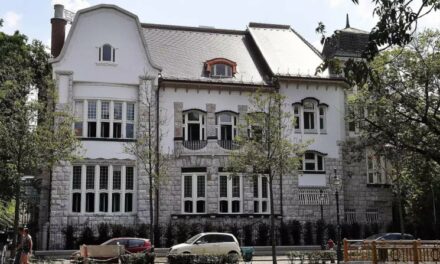The English discovered and dreamed up the story of Ignác Semmelweis: the British press praised the production and Sir Mark Rylance's performance.
It is a rare moment when the wider world discovers someone from Hungarian history, cultural and scientific history, and creates their own project about him. Very rare. After all, there were no international works even from 1848 or from 1956, which can still be interpreted very easily today - we should be happy if today's Hungarian culture produces high-quality works commemorating these.
But how can a Hungarian historical topic become the focus of interest abroad? The writer of these lines can only think of such a trifle as when, with a very surprising move, he took Imre Madách's Tragedy as the lead of his year-end, double Economist editorial essay, and tried to extract something valid about the affairs of the world from the main work of the Hungarian grand master of pessimism.
Now the British have once again discovered someone from 19th century Hungarian history.
And who is none other than Ignác Semmelweis, the savior of women, the doctor with an adventurous destiny. Those who didn't do anything else only found that puerperal diseases and the death of expectant mothers and newborns can be prevented quite well by a small act: washing hands.
Semmelweis was born in 1821, of German citizenship in Buda - Tabá - Echte, and after his studies he received his medical doctor's degree in Vienna in 1844, and a year later he became a doctor of surgery. In the following years, she increasingly realized that aseptic procedures that prevent infection help a lot in keeping both mothers and newborns alive after the labor and birth process.
During family tree research, we can see the otherwise well-known fact from family to family
Before the breakthrough of Semmelweis's research, child mortality was brutally high,
and the maternal mortality rate in the world, including in Hungary. In practice, the chance of a child surviving a birth was roughly 50-50, and the mothers' lives were also dancing on the edge of a blade.
Ignác Semmelweis made paradigm-changing discoveries in this field - and as so often in the history of science, the paradigm-changer was achieved by the rejection of the majority representing the old views.
The career of the Hungarian-German doctor then turned upside down. Although he was able to practice his profession in important positions, he was unable to achieve the implementation of his innovative, revolutionary theories in the Hungarian and German medical societies. In 1865, according to his colleagues, he began to behave more and more confused, and was finally referred to the mental hospital in Döbling, where
he was practically beaten to death by the nurses due to his alleged aggressive behavior.
The great life drama of the savior of women was now discovered by the British for themselves - and a play about Semmelweis' life and work was born, which is becoming increasingly successful on the stages of England.
The main driving force behind the play's birth and staging was British actor star Sir Mark Rylance;
the play was born from his idea and he also plays Ignác Semmelweis himself.
The British actor, born in 1960, made a name for himself on the most important stages in London and on Broadway in New York with a whole series of award-winning performances.
In addition to the stage, he also appeared in many films, recently, for example, The Other Boleyn Girl, Spielberg's Bridge of Spies and Ready Player One, Dunkirk, or Don't Look Up, which holds a crooked mirror to the zeitgeist of today. ), in which he played a memorable role as an exalted tech guru. II. Queen Elizabeth knighted the popular actor in 2017.
In these months, Mark Rylance focuses on the role of the Hungarian-German medical doctor.
The play, simply titled Dr. Semmelweis, will run on the stage of the patinated Harold Pinter Theater in the fall.
The Times called the performance "a beautiful, brave production"; the Daily Mail says it's "not to be missed"; according to the Evening Standard, we will see "a tale of scientific discovery" on stage. The presentation on the production page says: the performance is "about the brave Hungarian doctor, whose research saved the lives of millions of women".
Featured image: Dr. Semmelweis / Facebook












